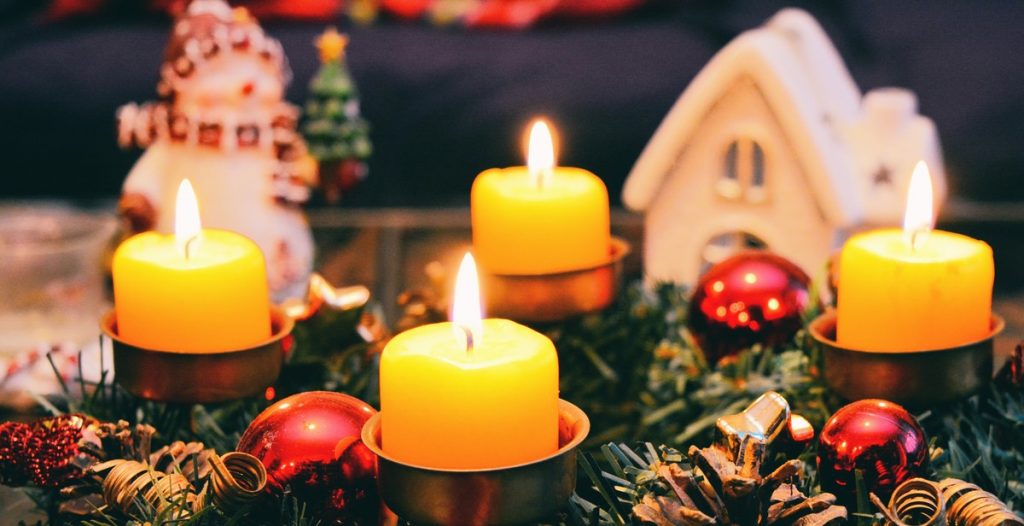The Secret of Long Lasting Candles: Tips and Tricks for Beginners
Candles have been a part of human civilization for centuries, serving various purposes from religious to decorative. However, not all candles are created equal. Some burn quickly, while others last for hours on end. Long lasting candles are essential in today’s fast-paced world where people are always looking for ways to create a relaxing and calming atmosphere in their homes or workplaces.
Why are Long Lasting Candles Important?
Long lasting candles provide numerous benefits. For one, they are cost-effective as they last longer than regular candles. This means that you won’t have to replace them as often, saving you money in the long run. Additionally, long lasting candles create a warm and inviting ambiance that can help reduce stress and promote relaxation. They are perfect for a romantic dinner or a relaxing bath after a long day at work.
However, achieving long lasting candles is not something that happens by chance. It requires proper selection, preparation, and usage. In this article, we will explore tips and tricks that beginners can use to create long lasting candles that will enhance their homes and lifestyles.
Choosing the right wax
When it comes to candle making, choosing the right wax is crucial to ensure the longevity and quality of your candles. There are various types of wax available in the market, but the three most commonly used waxes are soy wax, beeswax, and paraffin wax.
Soy wax
Soy wax is a popular choice among candle makers due to its eco-friendly and sustainable qualities. It is made from soybeans and is biodegradable, which makes it an excellent choice for environmentally conscious individuals. Soy wax also burns cleaner and longer than other waxes, making it a cost-effective option in the long run. It has a low melting point, which means it is easy to work with, and it holds fragrance well. Additionally, soy wax is non-toxic and safe for use around children and pets.
Beeswax
Beeswax is a natural wax that is produced by honeybees. It is known for its sweet, honey-like fragrance and golden yellow color. Beeswax candles burn slowly and emit negative ions, which can help purify the air. However, beeswax is a more expensive option compared to other waxes, and it can be challenging to work with due to its high melting point. Beeswax is also not vegan-friendly, as it is a byproduct of beekeeping.
Paraffin wax
Paraffin wax is a byproduct of petroleum and is the most commonly used wax in the candle-making industry. It is a cost-effective option and is readily available. Paraffin wax has a high melting point, which means it can hold its shape well and is easy to work with. However, it is not an eco-friendly option, as it is derived from a non-renewable resource and emits harmful chemicals when burned. Additionally, paraffin wax may not hold fragrance as well as other waxes.
Conclusion
Choosing the right wax ultimately depends on your personal preferences and the type of candle you want to create. Soy wax is an excellent option for those who prioritize sustainability and eco-friendliness, while beeswax is perfect for individuals who want a natural, sweet-smelling candle. Paraffin wax is a cost-effective option, but it is not the most environmentally friendly choice. Consider the pros and cons of each wax before making your decision.

Selecting the Perfect Wick
When it comes to creating long-lasting candles, selecting the perfect wick is essential. The type of wick you choose can affect how the candle burns, how long it lasts, and even the scent throw. Here are some tips on choosing the right wick for your candle:
Cotton Wicks
Cotton wicks are the most popular choice for candle makers. They are affordable, easy to find, and work well with a wide range of wax types. Cotton wicks come in a variety of sizes, so you can choose the right one for your candle size and type.
When selecting a cotton wick, you need to consider the diameter of your candle. A wick that is too small won’t be able to create a large enough melt pool, while a wick that is too large will create a lot of smoke and soot. To find the right size wick, you can use a wick size chart or do a burn test.
Wooden Wicks
Wooden wicks are a popular choice for soy wax candles. They create a unique crackling sound when burning, which adds to the ambiance of the candle. Wooden wicks also have a larger flame than cotton wicks, which can help with scent throw.
When selecting a wooden wick, you need to consider the width of your candle. Wooden wicks come in different widths, so you need to choose one that is appropriate for your candle size. You also need to consider the type of wax you are using, as some waxes may not work well with wooden wicks.
- Always test your wick before making a large batch of candles
- Consider the type of wax you are using when selecting a wick
- Choose a wick size that is appropriate for your candle size
By selecting the right wick for your candle, you can ensure that it burns evenly, has a good scent throw, and lasts longer. Take the time to test different wicks and find the perfect one for your candle-making needs.

Adding fragrance and color
Adding fragrance and color to your candles can enhance the overall experience of burning them. Here are some tips on how to do it:
Essential oils
Essential oils are a popular choice for adding fragrance to candles. They are derived from natural sources such as plants and fruits, and offer a wide range of scents to choose from. Some common essential oils used in candle making include lavender, peppermint, and citrus.
When using essential oils, it’s important to keep in mind that they are highly concentrated and should be used sparingly. A good rule of thumb is to use no more than 1 ounce of essential oil per pound of wax. Adding too much essential oil can cause the candle to burn improperly and may even be a fire hazard.
Dyes and pigments
Dyes and pigments are used to add color to candles. Dyes are typically used for liquid wax while pigments are used for solid wax. They come in a variety of colors and can be mixed to create custom shades.
When using dyes and pigments, it’s important to follow the manufacturer’s instructions for the correct amount to use. Adding too much can cause the candle to have an uneven color or even affect the burn of the candle. It’s also important to note that certain colors may require more dye or pigment than others to achieve the desired shade.
Natural alternatives
If you prefer to use natural alternatives for fragrance and color, there are several options available. For fragrance, you can use dried herbs or flowers, such as lavender or rose petals, which can be added directly to the wax. For color, you can use natural ingredients such as beet juice or turmeric powder.
Keep in mind that using natural alternatives may not provide as strong of a scent or vibrant of a color as using essential oils or dyes. It may also require some experimentation to find the right amount to use.
| Fragrance | Color |
|---|---|
| Essential oils | Dyes and pigments |
| Dried herbs or flowers | Natural ingredients |
Adding fragrance and color to your candles can be a fun and creative process. Whether you choose to use essential oils, dyes and pigments, or natural alternatives, be sure to follow the proper guidelines to ensure a safe and enjoyable experience.

Tips and Tricks for Long Lasting Candles
Long lasting candles are the result of proper care and maintenance. Here are some tips and tricks for beginners to ensure that your candles burn evenly and last longer:
Prevent Tunneling
Tunneling is when a candle burns straight down the middle, leaving wax on the sides. To prevent tunneling, always burn your candle for at least two hours the first time you light it. This allows the wax to melt evenly across the top and prevents tunneling in the future.
Trim the Wick
Trimming the wick to ¼ inch before lighting your candle is important to prevent excessive burning and ensure an even melt pool. A long wick can cause the candle to burn too hot and produce soot.
Burn Time and Temperature
Burn your candle for no longer than 4 hours at a time to prevent overheating and ensure longevity. Also, keep your candle away from drafts, which can cause uneven burning and decrease burn time.
- Always burn candles on a level, heat-resistant surface.
- Avoid burning candles near flammable materials or objects.
- Do not leave candles burning unattended.
By following these simple tips and tricks, you can enjoy long lasting candles that burn evenly and fill your space with beautiful scents.



